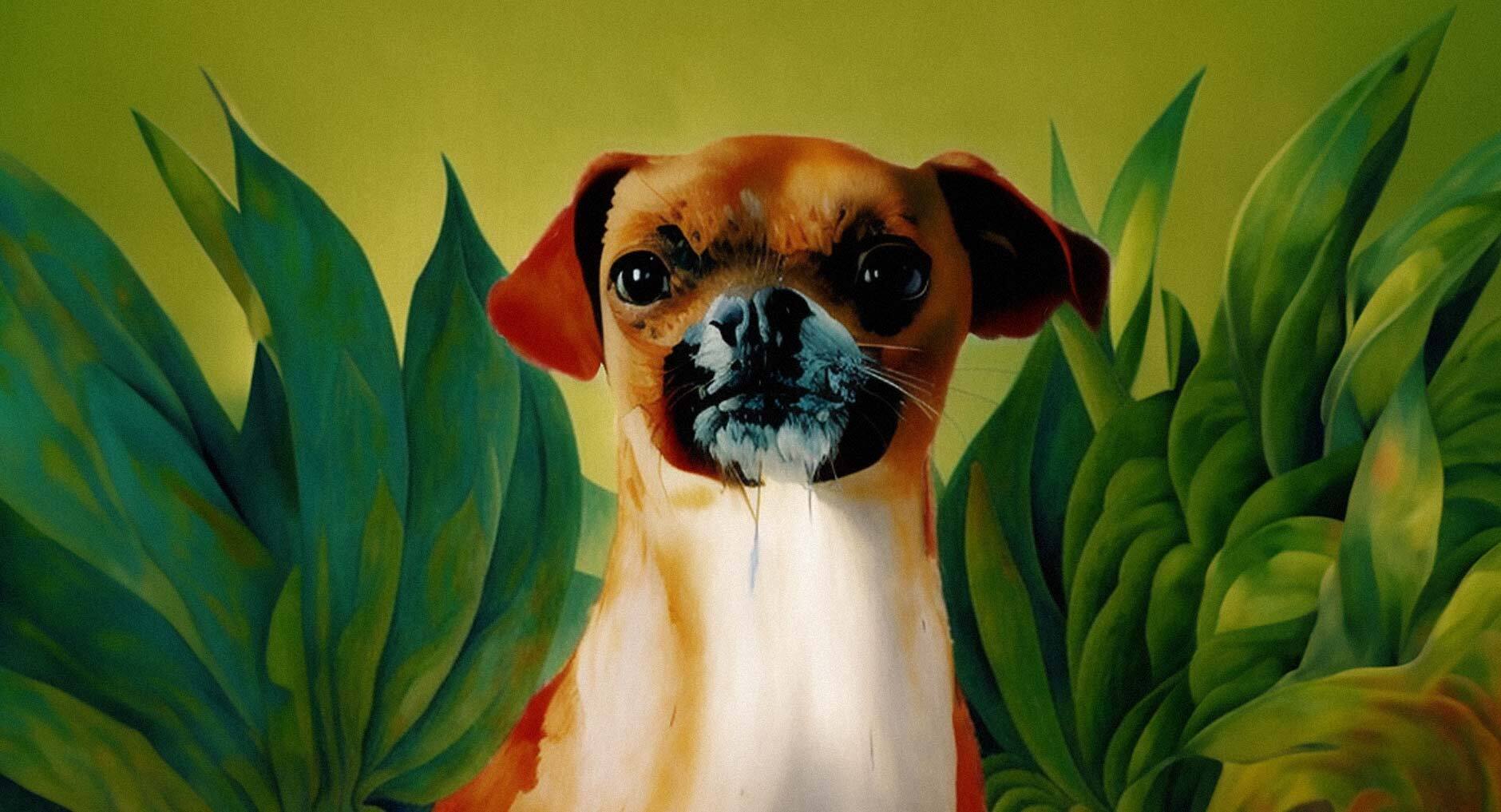
A lot goes into a name, especially if you’re in charge of doing the naming.
Whether it’s your first business or your latest offering, there are an infinite number of variables to keep in mind when choosing the perfect moniker: target audience, brand architecture, legal/copyright compliance, and global considerations to name just a few.
The art of naming tends to be a soft science, which unfortunately means there’s no one-size-fits-all solution for getting it right. While there may not be a roadmap, there is a compass.
For me, I’ve always found practical and universally relatable situations the best for illustrating naming strategy. And there’s one project that lives closest to my heart—naming my dog.
Finding “Puggy”
I had pets growing up—one tabby named Snickers and another infamously known as “Shitty Kitty”. And while I love cats, I’ve always been more of a dog person.
Let’s rewind to the summer of 2019. I was unemployed, massively depressed, and completely lost as to where my life was going and what my purpose was. In short, I was craving some unconditional love.
Sitting on my back porch with my partner on a balmy summer day in Alameda, California, I had an epiphany—we should get a dog.
My partner knew I was in need and quickly started scouring local shelter adoption pages. A few weeks later, she sent me a link from the Oakland Animal Services Shelter, and it was love at first sight. He was a ~1-year-old chihuahua-pug mix found wandering the streets of Oakland, and his name was Puggy.
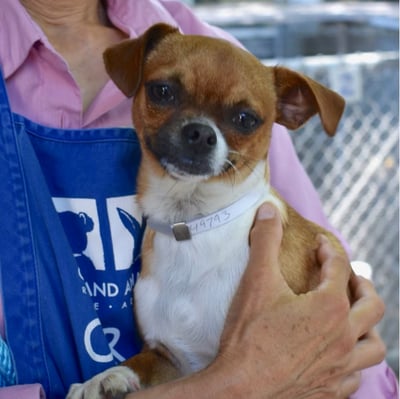
We immediately followed up to schedule a meet-and-greet. After seemingly the longest week of my life, we went to meet our new potential family member.
Rule #1: Trust your gut
There he was, pulling his foster mom with all of his might to the fenced-in area we sat in. He caught us with his big beautiful brown eyes, let out a little bark, and it was all over. After lots of kisses, he made his intentions clear: “I want to play”.
His foster Mom handed me a tiny Nerf tennis ball, and we played our first game of fetch. He was ferocious, fast, fun, and full of energy. After pumping his little legs as fast as he could, he would return ball-in-mouth only to make me chase after him to continue the game. Out of breath and full of joy, I had an overwhelming realization: Puggy needed a new name.
While it made sense since he’s part pug, Puggy was just too on the nose. Plus, it didn’t encapsulate anything about his personality. If anything, it detracted from it. Puggy sounds like a name for a dilapidated dog on his last legs, not a young and overly energetic pup. And because the two words are so similar, Puggy carried an unfortunate and misleading connotation of ‘ugly’—which he was anything but.
Of course, determining if a name is ‘bad’ is inherently subjective. But easily avoidable pitfalls include:
- Overly long and complicated
- Clear and concise over abstract and avant-garde
- Trendy and fads
- No one’s cat looks like a ‘Glizzy’
- Copying competitors
- Hard-to-pronounce
At the end of the day, the best way to tell if a name is wrong is by listening to your gut. If it doesn’t feel right when you say it out loud, then it’s not right.
After finishing our game of fetch, we said goodbye to Puggy. We finalized our adoption application on the car ride home, and the quest for a new name began.
Rule #2: Make it relevant
With at least a week before we heard whether Puggy would be ours or not, and a few weeks more we could take him home, I had plenty of time to find a new name. But how do you know what’s right when you’ve only known your subject for 30 minutes?
I knew that Puggy was a Chihuahua, a Pug, fast, smart, loving, and a heartbreaker. If Puggy was a product or service, these 6 facts would be akin to unique value propositions. As with any good name, you want it to be relevant. One word that encapsulates the ethos of the thing you’re trying to name. Immediately understandable, and worthy of serving as the centerpiece of a first impression.
While broad, these 6 UVPs served as the foundation for Puggy’s new name. I created the following mind maps to trace all the thoughts that came to mind for each of these 6 categories.
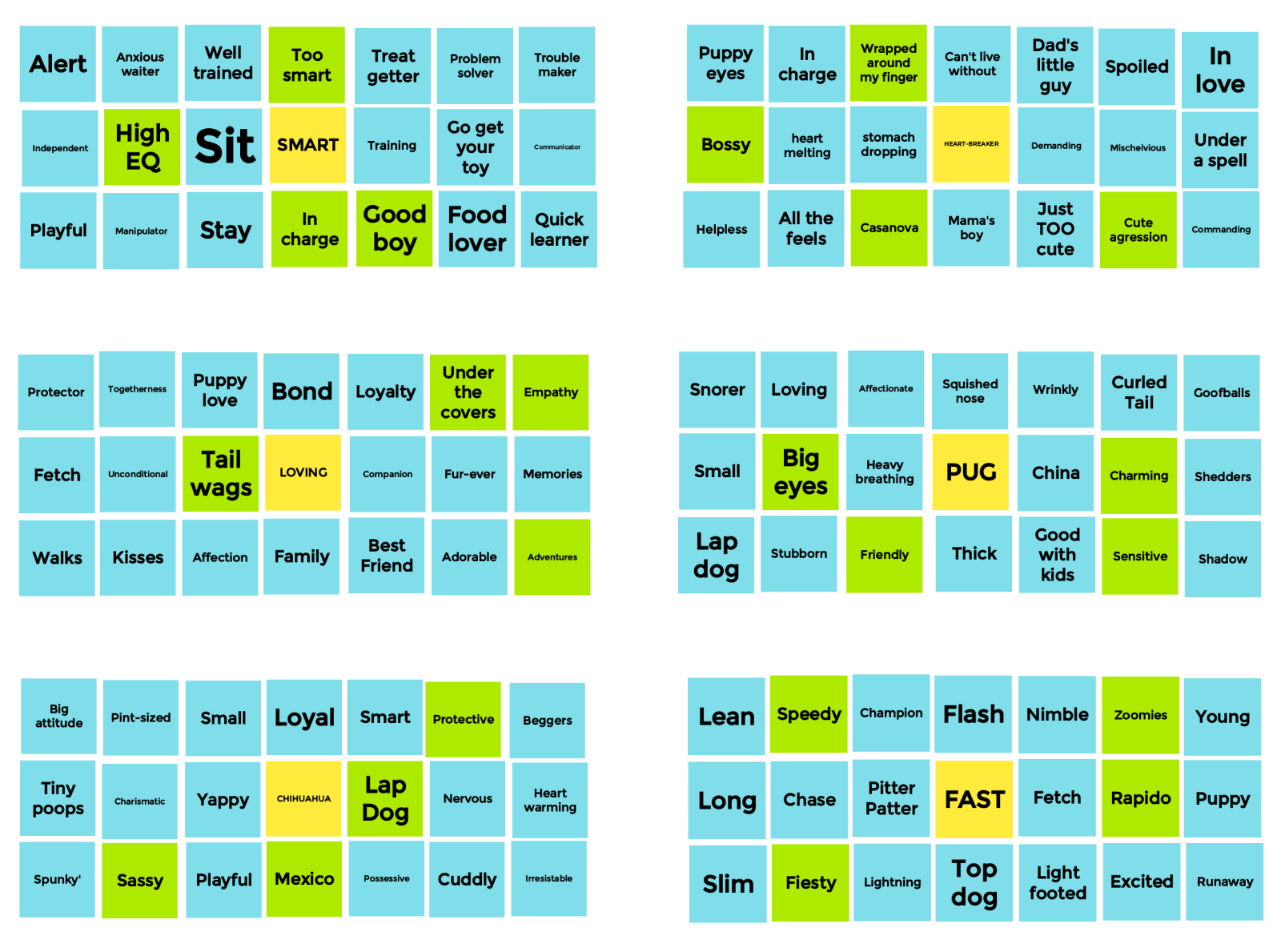
What’s the best?
After sitting on this initial brain dump of ideas for a few days, I sat back down to narrow the list. Which of these maps seemed most relevant for my furry friend? Here’s where I landed:
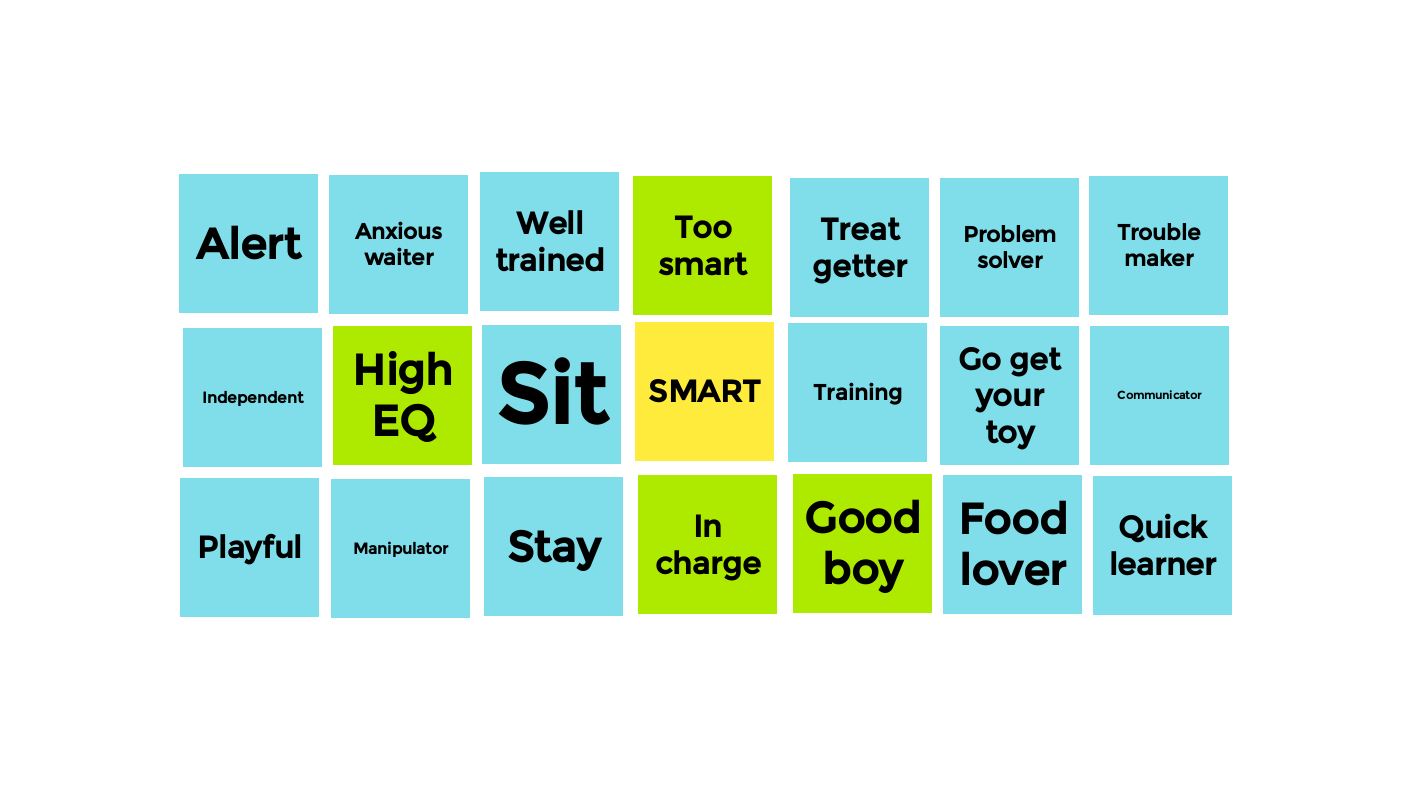
One of the things that stuck out most was just how smart Puggy was—as long as there was a just reward for his good behavior. He was attentive and immediate in obeying commands, like sit and lay down, when treats were involved.
He was a good boy, but could be mischievous if he didn’t want a game to end. He was emotionally intelligent, and uniquely attuned to his foster mom’s wishes. In some ways he was too smart, allowing his rambunctiousness to override good manners. I couldn’t blame him—if I was that cute, I’d probably be in charge too.
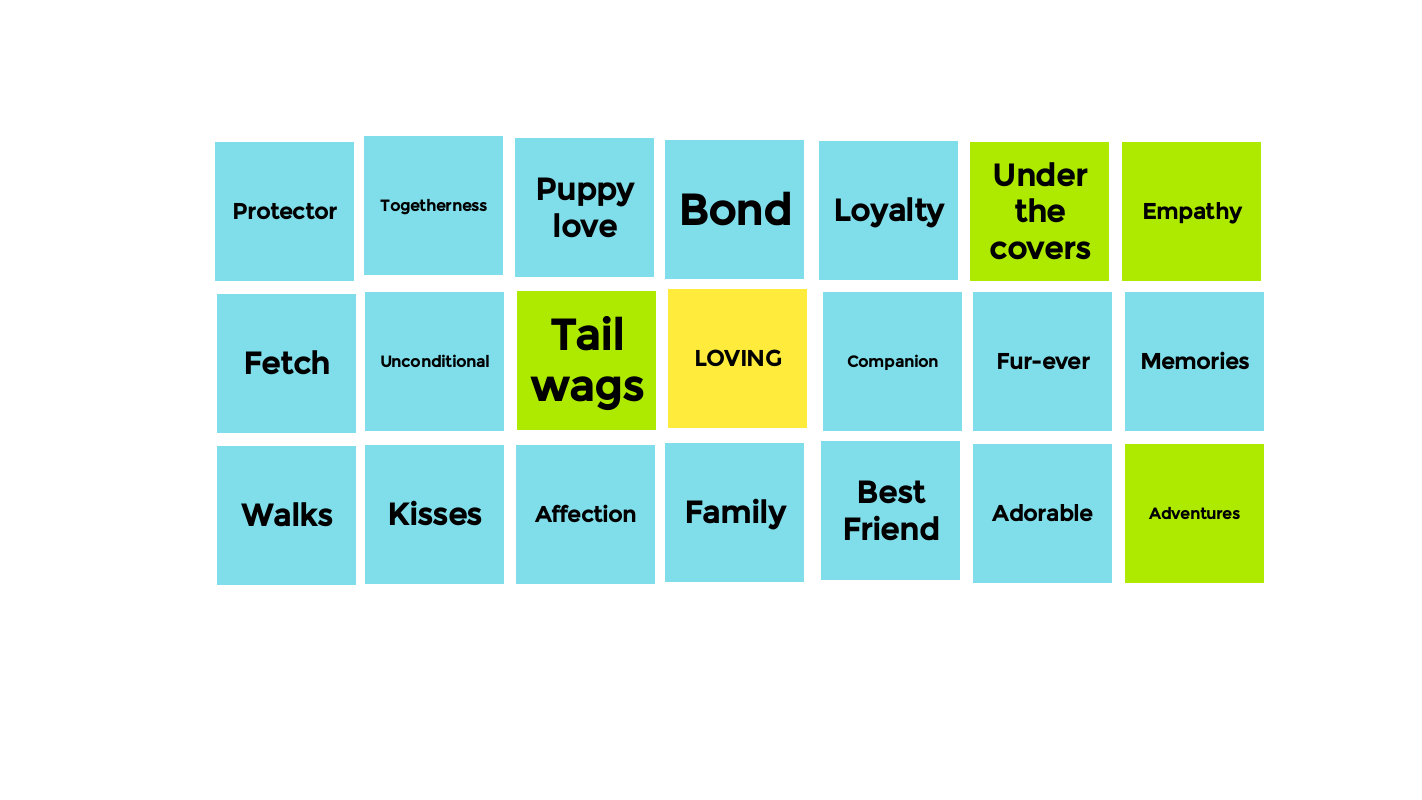
This dog was loving. The first time Puggy saw us, his tail was wagging so hard I thought he would go airborne. This pup was excited to be alive.
My heart filled with empathy when I looked at Puggy, and my mind raced with thoughts of all the adventures we’d have. When we first talked about getting a dog, my partner and I discussed bedroom etiquette—the pup could be on the bed, but not under the covers. The moment we left the shelter, I knew that rule was going to be broken.
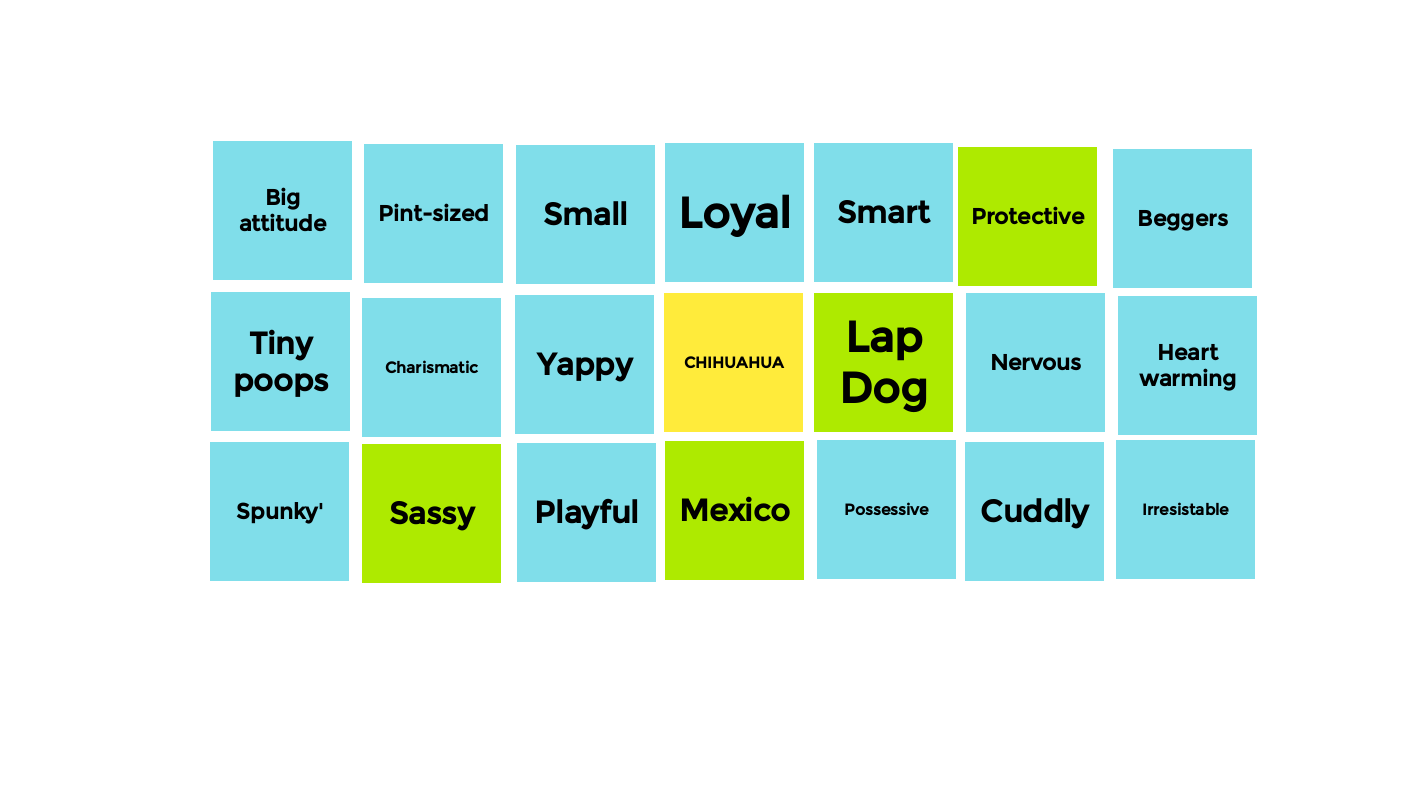
Finally, he was a Chihuahua. I had always thought of Chihuahuas as yappy little ankle biters. But Puggy was different—he loved all humans, and could find comfort in anyone’s lap.
His foster mom told us he was feistier with other dogs. Sure, he was protective, but what dog isn’t? When it was time to stop playing fetch, he sassily juked out anyone who dared to take his ball away.
I could work with that, because my partner carried a similar temperament. She was born in Miami, but spent her formative years in Mexico City. Knowing that Chihuahua’s hail from Mexico, I knew there was an opportunity to pay tribute to their shared heritage.
What’s it mean?
After refining my initial ideas, I was confident in this list of features to lead my thinking:
- He was smart—A good boy, but maybe too smart for his own good. Sporting high emotional intelligence and charm, this dog was the boss.
- He was loving—Wagging his tail anytime he met someone new. He was poised for new life of adventures and working his way under any covers.
- He was a Chihuahua—Protective over any lap he was in, but open to any heart in need. He was cute and sassy, which, in my experience, was a birthright of those from Mexico.
What’s the outcome?
I turned a 30 minute introduction into a refined list of standout features to build my initial list of names.
Depending on the scale of a naming project, an initial list of names can range anywhere from a couple dozen to a couple hundred. Finding the right name is kind of like a game of hide-and-seek—you have to look in a lot of wrong spots before you find what you’re looking for. Just because you didn’t find someone in a certain place, doesn’t mean it’s a bad hiding spot.
So I started drafting a list of possible names:
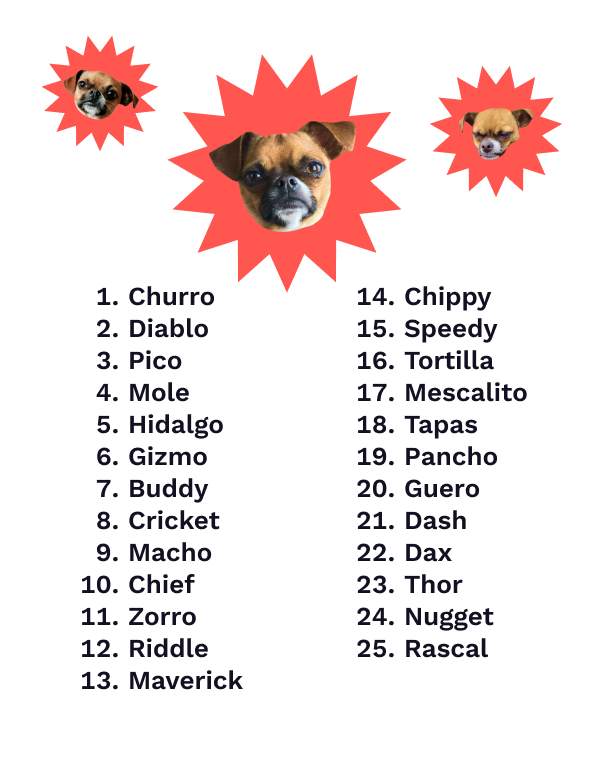
These 25 options we’re hot and ready for feedback—but what’s the best way to tell if a name is bad, good, or great?
Rule #3: Put it into context
A good name is more than just clever.
It should be relevant, in as much that it gives audiences a clear idea of what to expect. It should be unique, so it can stand apart from the crowd. Good names are easily memorable, pronounceable, and, if possible, beautiful. A great name should sound, look, and feel right.
To ensure a name has dynamic range, it’s fruitful to think about everyday situations in which the name will be used.
Imagine the scenarios
We finally heard back from the shelter, and it was official—Puggy was coming home. The news gave me butterflies in my stomach, and then a pit.
The responsibility of taking care of this sweet angel set in, and I started thinking about scenarios in which a good name would be vital.
The first was walks and the dog park. Being courageous and small, Puggy was fearless of bigger dogs. While admirable, that bravery is also anxiety-inducing. We didn’t want to shelter him from the outside world, but we did want to arm him with a distinguished name. And just like that, Buddy, Chief, Thor, and Dash were off of the list.
These names are too likely to be shared by other dogs—and since Puggy was so fragile, I didn’t want to risk other dogs reacting when I called his name.
And what if he got lost? He’s already a tiny dog, with an even tinier dog tag. The last thing I wanted was for whoever found him to have a hard time reading his name tag, which meant Mescalito, Hidalgo, and Maverick were struck from the list.
Then there’s the good stuff—like what name will convey the most amount of love when he’s being a good boy? In this case, it’s more subjective than anything. I particularly liked Churro, because I could roll my R’s and really lean into it when calling him a good boy.
Good, bad, and everywhere in between—there’s a lot of different scenarios to think about. My advice is to make sure the name is functional before it’s fun.
Think of the stakeholders
When thinking about a new name, you want to think about those interacting with it. While I deliberated Puggy’s new name, there were 2 primary groups of stakeholders I kept in mind: my partner and I, and new people.
My partner knows what she likes, and she’s not afraid to communicate what she doesn’t. Entering our final week before bringing Puggy home, I’d randomly pitch names to her throughout the day.
“What about Cricket?”
Her exaggerated eye roll clearly told me that wasn’t it, and she was right. She humored me for 10 other names before making a request. She had had two dogs before Puggy—a black lab named Charro, and a Catahoula mix named Tequila. She wanted our new pup’s name to be just as memorable.
Our list narrowed to Churro, Diablo, and Pico. The only problem was that neither of us were fully in love with any of those names. I went back to the drawing board.
The second stakeholder group I thought about was new people. I wanted Puggy’s name to roll out the red carpet for how happy he was, and the happiness others could expect. On top of being physically fast, he was also emotionally fast—his happiness was contagious. This got me thinking about fast words and slow words.
Linguists would describe this distinction as fricatives and plosives. Fricatives are consonants produced by forcing air through the narrow channel between the tongue and front teeth, upper palate, or molars. Think words that have F,S,V, or Z in them. Plosives are consonants where air flow is stopped: think words where the emphasis is laid on B,D,P, or T.
A brilliant example of fricatives and plosives working together is Fast Food. The word “fast” sounds fast—you can hear the air running through your mouth when you say it. The word food is longer, and ends abruptly. The fricatives in fast indicate speed, and the plosives in food indicate something whole. When put together, you get a brilliant juxtaposition. McDonalds proved good food could also be fast.
Even though we liked Churro, Diablo, and Pico—none of these names were fast enough. After weeks of going through names, I was frustrated and a little dejected. My mind needed a break.
Rule #4: Take a shower
It was 3 days before we’d pick Puggy up from the shelter. We had no name, and thus we had no dog tag.
I was beefing it. While I still liked Churro, Diablo, and Pico, my gut told me they just weren't right. From past experience, I knew finding the right name felt like lightning. Saying it brought a smile to your face, and, hopefully, to others.
I was experiencing creative block, and I knew it wasn’t going to be solved by banging my head against the desk. Some people take walks, others might watch a movie or go out with friends. Whatever works for you, as long as you get out from behind the desk.
For me, that took the form of a hot and refreshing shower.
As I let the water wash over me, I thought about Puggy. I wondered how a pup I’ve barely met could be taking up so much of my headspace. Then I thought about how cute and loving he was, and how despite ever being there, he was already the boss of our household.
“The boss of our household”, I thought. “…a regular el jefe”
Thoughts turned to words, and I screamed “Jefe, no!….Good boy, Jefe….Sit, Jefe….Meet Jefe”.
My face lit up like a Christmas tree. The moment I uttered the name, electricity ran through my body. I grabbed a towel and ran to my partner. She looked rightfully concerned, and asked “What’s wrong?”
With a smile on my face, I belted out “What about Jefe?!”
Her eyes opened wide, and her smile tore at the sides of her mouth. She was just as in love with it as I was.
He was small and in charge, and the boss of our hearts. Jefe was completely unique, and totally fitting for his personality. With the added benefit that it was a humorous ode to his size, without being belittling.
Introducing El Jefe
With two days to spare, we went to work.
We ordered Jefe’s new dog tag, and checked domain availability online. Luckily for us, @eljefethedog was available on Instagram, Tik Tok, and a majority of other platforms.
We shared our new name with family and friends to resounding laughter and approval from all. It was a long and frustrating process, but one of the most fulfilling projects I’ve ever had the pleasure of working on.
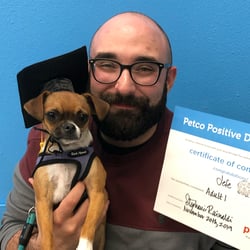 Finding the perfect name is a labor of love. Just because a process works well for one doesn’t necessarily mean it will for others. Instead of using word maps, you might want to other lateral thinking exercises like rhyming and alliterations, historical or metaphorical explorations, or just cracking a thesaurus open and seeing what sticks
Finding the perfect name is a labor of love. Just because a process works well for one doesn’t necessarily mean it will for others. Instead of using word maps, you might want to other lateral thinking exercises like rhyming and alliterations, historical or metaphorical explorations, or just cracking a thesaurus open and seeing what sticks
But as long as you trust your gut, make sure it’s relevant, and think about context, you’ve got a headstart in finding a great name for your business, product, or best friend.
